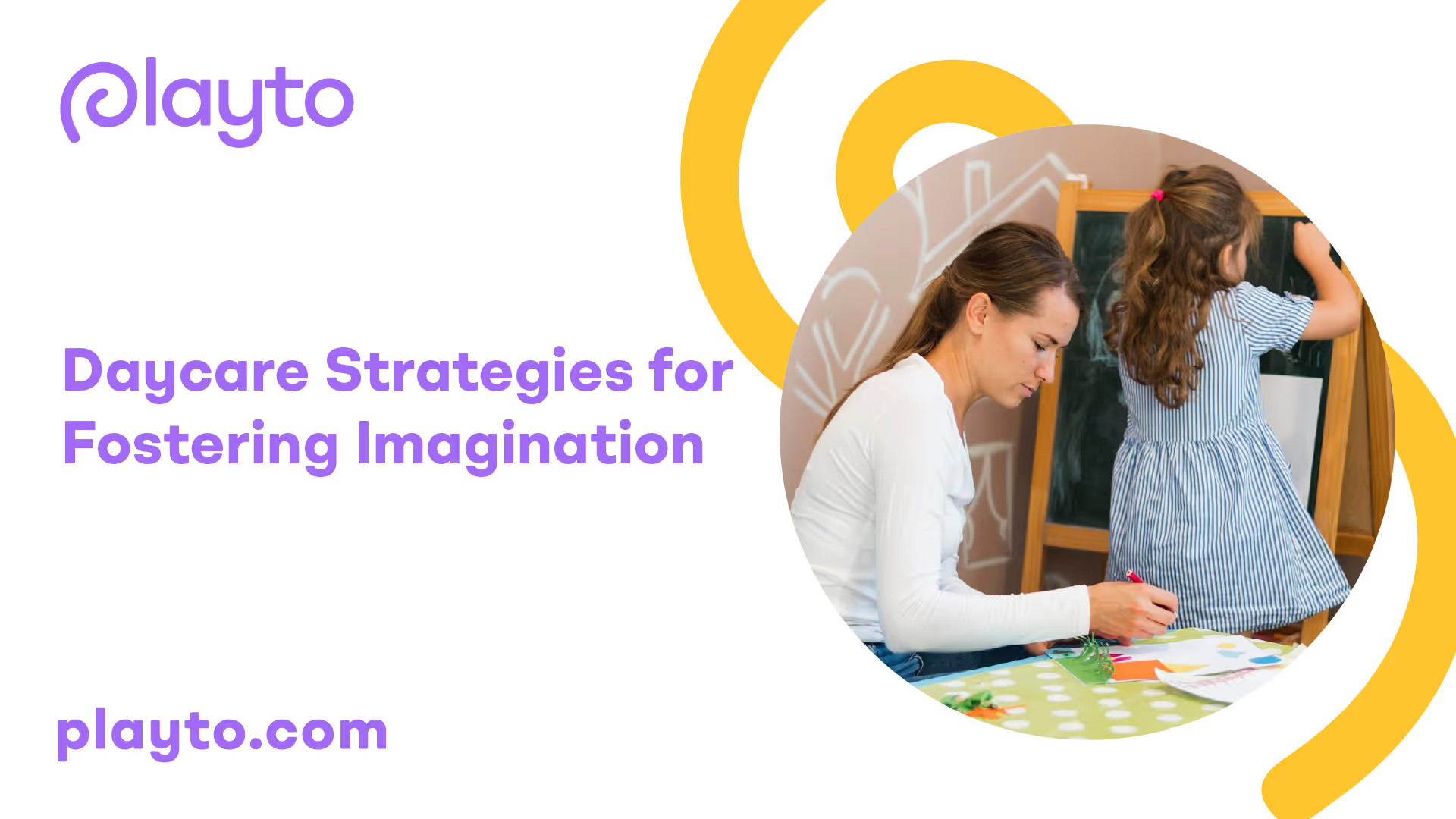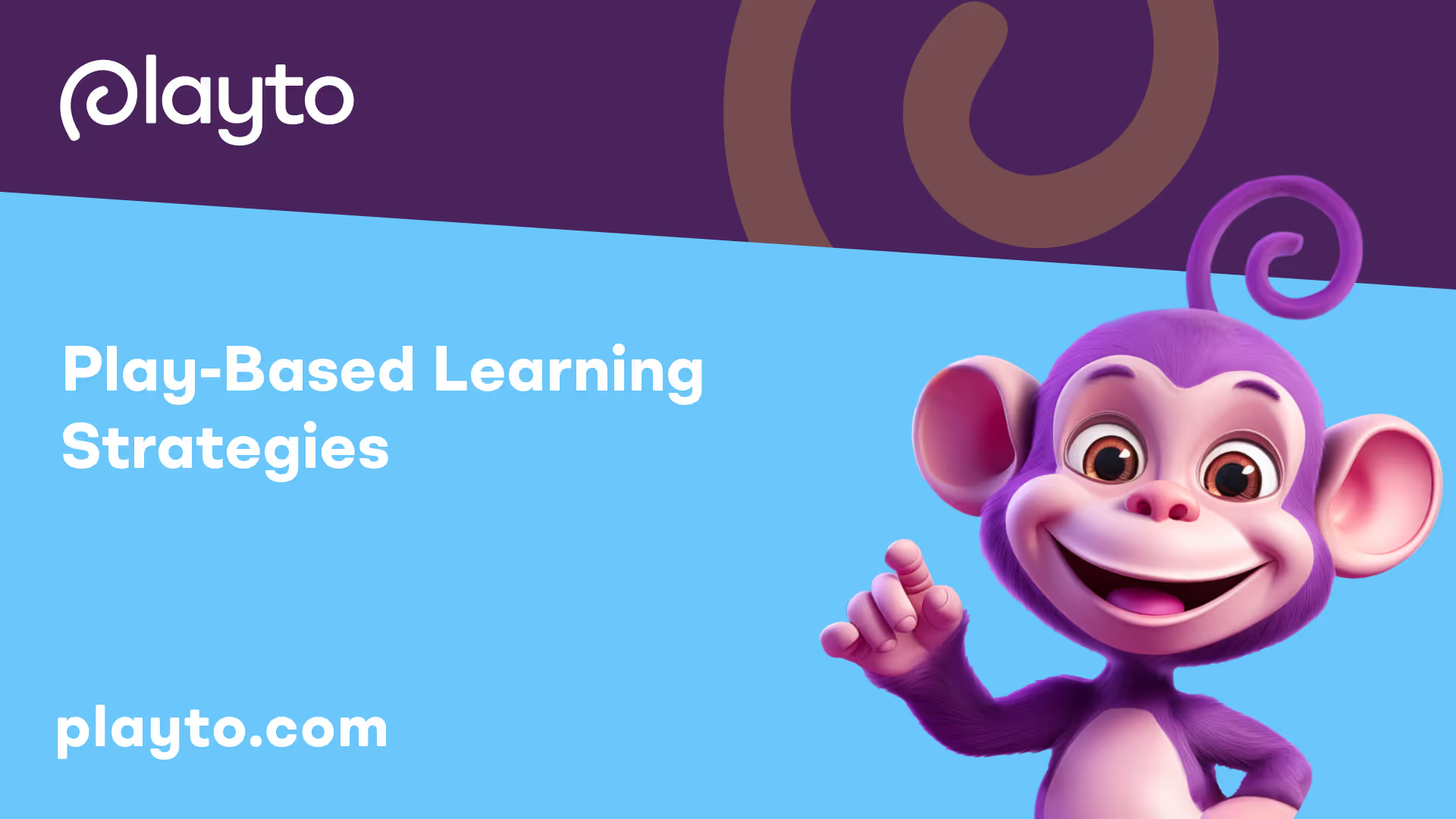
Fostering Imagination in Daycare
In a daycare setting, fostering imagination is crucial for the development of young children. By encouraging creativity and imagination, caregivers can provide a nurturing environment that supports cognitive, social, and emotional growth. Let's explore the importance of imagination in child development and strategies for nurturing creativity in early childhood.
Importance of Imagination in Child Development
Imagination plays a vital role in the overall development of children. According to Bright Horizons, imagination fosters cognitive and social development. It helps children develop critical thinking skills and creative problem-solving abilities. When children are encouraged to imagine and experiment with new ways of doing things, they develop critical thinking skills that will serve them well throughout their lives.
Imagination also has a significant impact on social-emotional development. Through imaginative play and role-playing scenarios, children can explore different resolutions and perspectives, boosting their confidence in interacting with others. It allows children to express and cope with their feelings, relieving stress and promoting emotional well-being. By supporting imagination, caregivers provide children with a safe space to explore and understand their emotions.
Nurturing Creativity in Early Childhood
Early childhood is a crucial period for nurturing children's imaginations. According to Bright Horizons, fostering creativity and imagination during this time sets the stage for lifelong learning and problem-solving skills.
One effective strategy for nurturing creativity in early childhood is through play-based learning. Play provides children with opportunities to explore, experiment, and express themselves creatively. As mentioned by PBS, play fosters physical development, mental development, and new ways of thinking and problem-solving in children. It allows them to develop their unique perspective and individual style of creative expression.
Caregivers can create safe and engaging play areas that encourage imagination and creativity. By providing a variety of materials and open-ended toys, children can freely explore and create their own stories, scenarios, and worlds. Caregivers should avoid dominating play and instead foster children's abilities to express themselves and stimulate creative ideas. It's important to remain open to new and original ideas, encouraging children's satisfaction in playing with each other.
By embracing and encouraging imagination in daycare settings, caregivers can support children's cognitive, social, and emotional development. By providing opportunities for imaginative play and creative expression, children can develop critical thinking skills, problem-solving abilities, and confidence in their interactions with others. Nurturing creativity in early childhood sets the foundation for a lifetime of exploration and learning.

Play-Based Learning Strategies
In daycare settings, fostering imagination through play-based learning strategies is a fundamental approach to child development. Play not only allows children to have fun but also serves as a powerful tool for learning and growth. In this section, we will explore two key strategies for incorporating play-based learning in daycare: creating safe and engaging play areas and incorporating play-based learning activities.
Creating Safe and Engaging Play Areas
Daycare centers prioritize creating safe and engaging play areas that are designed to stimulate children's imagination and foster their overall development. These play areas are filled with age-appropriate toys, sensory materials, and interactive games that encourage infants to explore, discover, and interact with their surroundings [1].
When designing play areas, it's important to consider the developmental needs and interests of the children. Providing a variety of toys and materials that encourage different types of play, such as building blocks, art supplies, and pretend play props, can help cater to the diverse interests and abilities of the children.
Creating a safe environment is paramount. Ensuring that play areas are free from hazards, such as sharp edges or small parts that could pose a choking hazard, is crucial. Regular safety checks should be conducted to maintain a safe and secure play environment for the children.
By creating safe and engaging play areas, daycare centers provide children with the freedom to explore, experiment, and express themselves. This fosters their imagination, encourages social interaction, and supports their overall development.
Incorporating Play-Based Learning Activities
Play-based learning activities are an integral part of fostering imagination in daycare settings. Play not only allows children to have fun but also helps them comprehend cause and effect, develop motor skills, and build their abilities through play [1]. These activities promote holistic development by engaging children's physical, cognitive, and social-emotional skills.
Daycare centers incorporate a wide range of play-based learning activities that cater to children's interests and developmental stages. These activities may include sensory play, art projects, dramatic play, music and movement, outdoor play, and problem-solving games.
Sensory play activities, such as exploring different textures and materials, stimulate children's senses and encourage creativity. Art projects provide opportunities for self-expression and imagination, allowing children to explore various art materials and create their own masterpieces.
Dramatic play activities, such as pretend play and role-playing, enable children to immerse themselves in imaginative scenarios and develop their social and emotional skills. Music and movement activities allow children to express themselves through rhythm, dance, and song, further enhancing their creativity.
Outdoor play provides children with opportunities to engage with nature, explore their environment, and develop gross motor skills. Problem-solving games, such as puzzles and building blocks, challenge children to think critically and creatively.
By incorporating play-based learning activities, daycare centers offer children a well-rounded learning experience that promotes imagination, creativity, and overall development.
Incorporating play-based learning strategies in daycare not only fosters imagination but also supports children's cognitive, physical, and social-emotional development. By creating safe and engaging play areas and incorporating a variety of play-based learning activities, daycare centers provide children with the essential tools to explore, learn, and grow.

Stimulating Imagination Through Activities
To foster imagination in children at daycare, it is essential to provide them with stimulating activities that encourage creativity and exploration. Two key strategies for stimulating imagination are drama and discovery, as well as building and construction experiences.
Role of Drama and Discovery
Drama is an integral part of a learning environment that allows children to engage in acting, imitation, pantomime, improvisation, characterization, and play production [2]. By re-enacting scenes from books, movies, or television shows, children can bring learning to life and explore different roles and scenarios. This not only enhances their imaginative skills but also helps develop their communication and socialization abilities.
Discovery, on the other hand, involves providing opportunities for children to explore and experiment with their surroundings. It encourages them to take risks, test their theories, and engage with materials in new and unconventional ways [2]. By focusing on the process of learning rather than the final product, children are encouraged to embrace curiosity and develop problem-solving skills.
Building and Construction Experiences
Building and construction experiences play a vital role in stimulating imagination and fostering creativity in children. These experiences require imagination, design, and creativity, allowing children to transform their ideas into tangible structures [2]. Traditional building materials like blocks can be enhanced by incorporating additional items such as natural pieces of wood, cardboard tubes, boxes, and duct tape. These unconventional materials provide children with new possibilities to explore and use their imagination.
By engaging in building and construction activities, children learn to think critically, plan, and problem-solve. They also develop spatial awareness and fine motor skills as they manipulate and assemble different objects. Open-ended materials are particularly valuable as they allow for exploration, discovery, transformation, and imaginative play [2].
By incorporating drama and discovery activities, as well as building and construction experiences, daycare providers can create an environment that stimulates children's imagination. These activities not only foster creativity but also support cognitive, social, and emotional development. Encouraging children to explore their ideas, take risks, and engage in imaginative play nurtures their ability to think outside the box and develop a lifelong love for learning.
Encouraging Storytelling
Storytelling is a powerful tool that can greatly contribute to fostering imagination in children. By incorporating storytelling activities into daycare settings, educators can help children develop essential skills and promote their overall language development. Let's explore the benefits of storytelling for children and how it promotes language development.
Benefits of Storytelling for Children
Storytelling offers numerous benefits for children's development. It helps teach moral values such as honesty, kindness, and generosity, fostering empathy and conflict resolution skills [3]. Through stories, children are exposed to new ideas, people, places, and events, expanding their imagination and teaching them about the world [3].
Engaging in storytelling promotes creative thinking in children, encouraging them to exercise their imagination, storytelling skills, and critical thinking abilities [3]. It provides an opportunity for children to explore different perspectives, solve problems, and think outside the box.
Furthermore, storytelling fosters a love of reading in children. By introducing them to the joy of storytelling, children develop a deeper appreciation for books and the written word. This can lead to a better understanding of the world and potentially create lifelong readers [3].
Promoting Language Development
Storytelling plays a crucial role in promoting language development in children. Through storytelling, children are exposed to new vocabulary, sentence structures, and grammatical patterns. They learn to communicate effectively, express their thoughts and emotions, and develop their listening and speaking skills.
Engaging in storytelling activities helps children improve their language comprehension and expression. They learn to follow the sequence of events, understand cause and effect relationships, and draw connections between different elements of the story. These skills form the foundation for strong reading and writing abilities.
To encourage language development through storytelling, educators can incorporate interactive elements into the storytelling experience. This can include encouraging children to ask questions, discuss the story, and even create their own variations of the narrative. By actively engaging children in the storytelling process, educators can foster their language skills and promote a sense of ownership and creativity.
Incorporating storytelling into daycare environments provides a valuable opportunity for children to enhance their imagination, develop critical thinking skills, and strengthen their language abilities. By embracing the benefits of storytelling and promoting language development, educators can create a nurturing and stimulating environment that supports children's overall growth and development.
Providing Creative Materials
To foster imagination in daycare settings, it is essential to provide children with a range of creative materials that encourage exploration and self-expression. This section will discuss two key aspects of providing creative materials: offering a variety of art materials and promoting outdoor exploration for inspiration.
Offering a Variety of Art Materials
One effective strategy for promoting imagination in daycare is to offer a wide selection of art materials. Providing crayons, markers, paints, and clay without a specific end goal allows children to explore and create freely, stimulating their imagination and helping them think outside the box [4]. By having access to various art materials, children are encouraged to experiment with different textures, colors, and techniques, which can spark their creativity and allow them to express themselves in unique ways.
Creating an art corner or dedicated art space within the daycare environment can further enhance children's engagement with creative materials. By displaying children's artwork prominently, they feel a sense of pride and accomplishment, inspiring their peers and encouraging further creativity. This also helps in creating a creative environment with bright colors and open-ended materials, which can inspire children to think creatively and explore their imagination [4].
Outdoor Exploration for Inspiration
Encouraging outdoor exploration is another effective strategy for fostering imagination in daycare settings. Nature walks, zoo excursions, or simply spending time in a well-designed outdoor play area can provide children with opportunities to observe their surroundings closely and use their imagination to create stories or artwork inspired by nature [4]. The natural environment serves as a great source of inspiration, allowing children to appreciate the beauty of the world around them and stimulating their imaginative thinking.
By incorporating outdoor exploration into daily routines, daycare providers can help children develop a sense of wonder and curiosity about the world. Nature-based activities, such as collecting leaves, rocks, or flowers, can be used as prompts for creative projects or storytelling. This connection with the natural world can also foster a sense of environmental stewardship and encourage children to develop a deeper appreciation for their surroundings.
By offering a variety of art materials and promoting outdoor exploration, daycare providers can create an environment that nurtures and supports children's imagination. These strategies provide children with the tools and inspiration they need to explore their creativity, express themselves, and develop essential skills for future learning. To further explore strategies for fostering imagination in daycare, continue reading our articles on daycare strategies for fostering curiosity and daycare strategies for handling homesickness.
Embracing Imaginative Play
Encouraging imaginative play is a key aspect of fostering imagination in daycare settings. This section explores two important elements of imaginative play: role-playing and pretend scenarios, and the benefits of free and unstructured play.
Role-Playing and Pretend Scenarios
Role-playing and engaging in pretend scenarios are fundamental components of imaginative play. Children have the opportunity to step into different roles, whether it's pretending to be a doctor, a teacher, or a firefighter. This type of play allows them to explore various social and emotional dynamics and develop a better understanding of social norms and behaviors. According to Miracle Recreation, imaginative play helps children practice social skills by mirroring interactions and contributes to the development of critical decision-making, cognitive, and social skills.
During role-playing, children have the freedom to imagine and act out scenarios, fostering creative thinking and adaptability. They may pretend that dolls are going shopping, race toy cars, or create a pretend meal, allowing their imagination to run wild. This type of play nurtures their ability to think outside the box and come up with new ideas.
Role-playing also plays a crucial role in developing empathy. By taking on different roles and experiencing other people's daily lives and struggles, children can better understand and connect with others. This contributes to their social and emotional development, building empathy, self-esteem, and confidence.
Benefits of Free and Unstructured Play
Imaginative play is often characterized by its open-ended and unstructured nature. Unlike structured activities, free play allows children to have complete control over their roles and actions. This freedom fosters self-expression and healthy development.
Unstructured play provides children with the opportunity to explore their own interests and ideas, strengthening their problem-solving skills and decision-making abilities. It encourages them to think independently, make choices, and take risks in a safe and supportive environment.
Moreover, free play enhances language development and communication skills. As children engage in imaginative play, they act out different roles, experiment with language styles, and practice listening to others. This strengthens their understanding of spoken and written words and promotes language acquisition.
By embracing imaginative play and providing opportunities for role-playing and pretend scenarios, daycare settings can create an environment that stimulates children's creativity, social skills, and cognitive development. Encouraging free and unstructured play allows children to fully immerse themselves in their imagination, fostering a love for learning and a sense of wonder.
.avif)